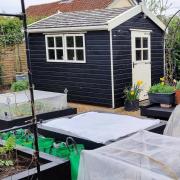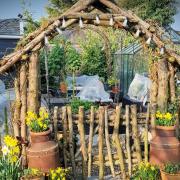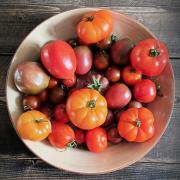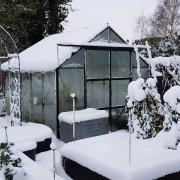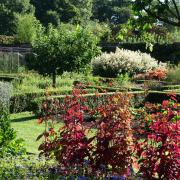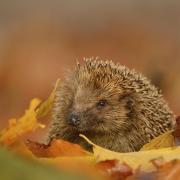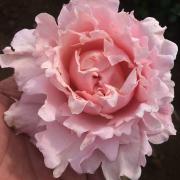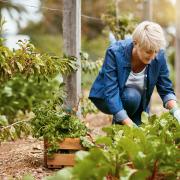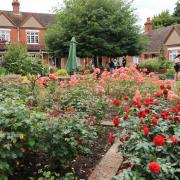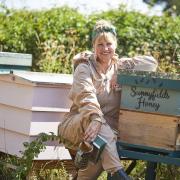Easter . . . things start to grow and puppies should be settled in their new homes

This year Easter Sunday falls on the same day that the clocks go forward, March 27. Those of us who find ourselves in church will not only have the opportunity to celebrate the Light of the World during the service, but also to enjoy a little more light in the day that afternoon.
Time is not the only thing that can confuse us in March – so can the weather. Whilst working in the garden, I have known it to move from blazing sunshine to hail, wind and rain in the space of half an hour. It is, however, a far more precarious month for plants because they can all too easily be fooled into starting growth, only to be ‘nipped in the bud’ by a sharp frost. Keep a watchful eye.
Easter is most often associated with daffodils. For me the point about a daffodil is its scent. That’s not to say that the individual flowers don’t have a certain charm, but I don’t get excited about their visual impact. It is their scent that slays me each year when I first encounter it. Last year I caught it first next to a clump of Christmas box (sarcococca confusa) and within range of some witch hazel (hamamelis). The combination stopped me in my tracks – even thinking about it now brings a warm coil of joy to the pit of my stomach.
I don’t share the often-raised aesthetic objection to yellow daffodils, but I do have a soft spot for the white forms with a coloured centre (Pheasant’s eye). I have also noticed that for some reason my yellow daffodils are more likely to smell gorgeous, whereas some of the white verities I grow, if cut and put in the house, end up smelling of old socks. This may well be bad luck rather than horticultural lore.
If you like daffodils en masse the Spring Bulb Walk at Kentwell Hall usually looks resplendent about now. They have planted over 100,000 bulbs over the years. Suffolk isn’t shy when it comes to daffodils, and the county is endowed with liberal quantities, peppering village greens, encircling our ancient duck ponds and even mini-roundabouts. Long may it continue.
If, like me, you have pots of forced daffodils and hyacinths still hanging around, now is the moment to plant them out in the garden. They generally don’t like being forced twice in a row so better to buy new next year.
Amaryllis . . . again
Friends keep asking me whether they can keep their Amaryllis (more correctly, Hippeastrum). As they are quite expensive it is certainly worth the effort in my opinion. If you still have them lying around move them to a sunny windowsill and feed them so the bulb can stock up on nutrients for the following season’s flowers. When the foliage starts to die cut it back, stop feeding it and move it outside somewhere sheltered for the summer. In the autumn bring it back into the warmth to coax it into new growth. Don’t repot them in a hurry – the pot should be no more than an inch or two wider in circumference than the bulb otherwise you will get foliage instead of flowers. Mix in perlite so the bulbs don’t rot and keep a good proportion of the bulb protruding from the compost.
Thereby wags a tail . . .
Spring is puppy time and my eldest daughter, now six, is anxious to join the ranks of the dog owning classes. The trouble is that with four children under the age of nine, and one dog already (not to mention chickens, ducks and other assorted creatures) we have our work cut out as it is. I always say babies are easier than dogs because at least you can put nappies on them. I accept my wife has a slightly different view.
Even so, puppies have been my job thus far and as I am part of the team working on the Modern Slavery Garden for the Chelsea Flower Show this year, I am only going to get busier between now and May. On the other hand, as we all know, daughters have a nifty way of extracting favorable decisions from their fathers. The matter is finely in the balance at time of writing – a glance at my twitter account will probably reveal whether Beatrice gets her way.
In the garden
Last chance to plant bare root hedging and roses. You can still move trees and shrubs.
Lift and divide summer flowering herbaceous perennials.
Now is a good time to mulch. The only rule is don’t mulch over dry soil – it can keep moisture out as well as in.
Sow hardy annuals (sweet peas, cornflowers, nasturtiums etc) outside towards the end of the month if the soil is warming up and sow half hardy annuals and tender perennials under glass.
Plant early potatoes
Put flower supports in place now. We don’t bother with expensive nursery bought devices. Twigs, canes and string do just fine.
Broad beans can be sown outside as can radishes and early turnips (like Milan). I start tomatoes inside and pot up Dhalias for planting out later. A successional sowing of lettuce can start outside under cloches too.
It is amazing what a lift you can give the garden by tidying the edges of beds now. Weed now for ease later.






